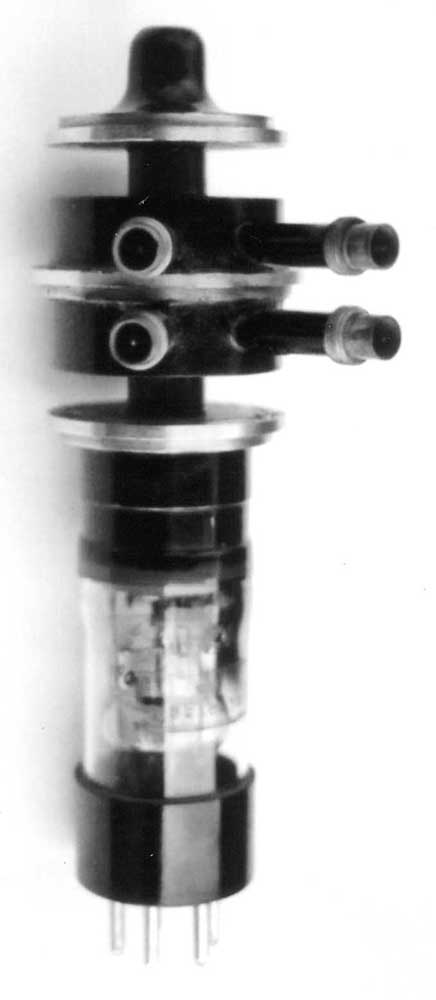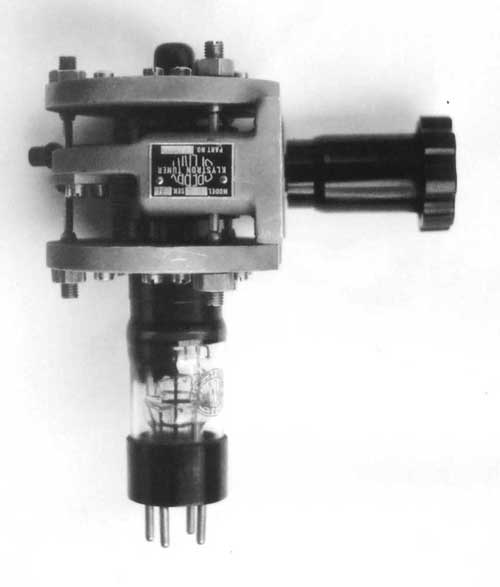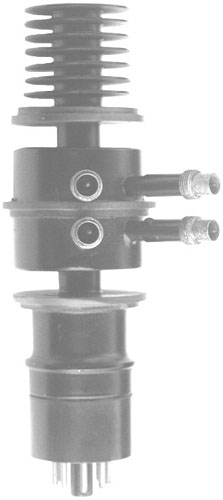Sperry 411 and 710
The Sperry 411 and 710 may well be some of the first klsytrons to be manufactured. These are the only klystrons I have seen with pre-octal bases. No data has been found on either of these tubes. The 710 tube is a 2 cavity oscillator device - the feedback loop is inside the vacuum envelope and only a single RF connection from the output cavity can be seen. The 411 is an amplifier device and has 2 RF connections on both cavities as was typical of many early Sperry tubes. The cavities are tuned by compression - one wall of each cavity is corrugated. The type 11C tuner is required for
tuning and can be seen fitted to the 710.
The power output from these devices would not be high as there is no heatsink on the collector. The perveance is quite low for both of these tubes - only small currents are drawn at voltages in excess of 1kV. The electron gun is fitted with a grid for beam current control. The cavity dimensions are the same as the later 3K30 , and so the operating frequency range of these tubes is probably also the same - 2.7 - 3.3GHz. The getter in these is a coil type device mounted between 2 pins on the socket. It looks as though the getter was fired by passing a current though it via these pins. Heater voltage = 6.3V
The 3K21 is one of 3 related klystrons
which were first manufactured sometime
in the early 40s. Many features of the
earlier tubes remain - the odd SKC RF
sockets, the dual RF connections on each
cavity and the requirement for the
external tuner - these also use the type
11C tuner.
These devices [3K21,22,30] are
essentially identical except for frequency:
3K21 = 2.3 - 2.725GHz,
3K22 = 3.32 - 4GHz, 3K30 = 2.7 - 3.3GHz.
Power output can be on the order of
20 watts, and a maximum beam power of
450 watts CW is permissible. These tubes
can be operated over a wide range of
voltages - the datasheet gives information
for voltages as low as 400V to the
maximum of 2kV. A feedback loop can be connected between the cavities to allow operation as an oscillator. 'Klystrons & Microwave Triodes' - Vol 7 in the MIT Radiation Labs series mentions quite a bit of theoretical and experimental data on the 3K30.
Danial Stocks






